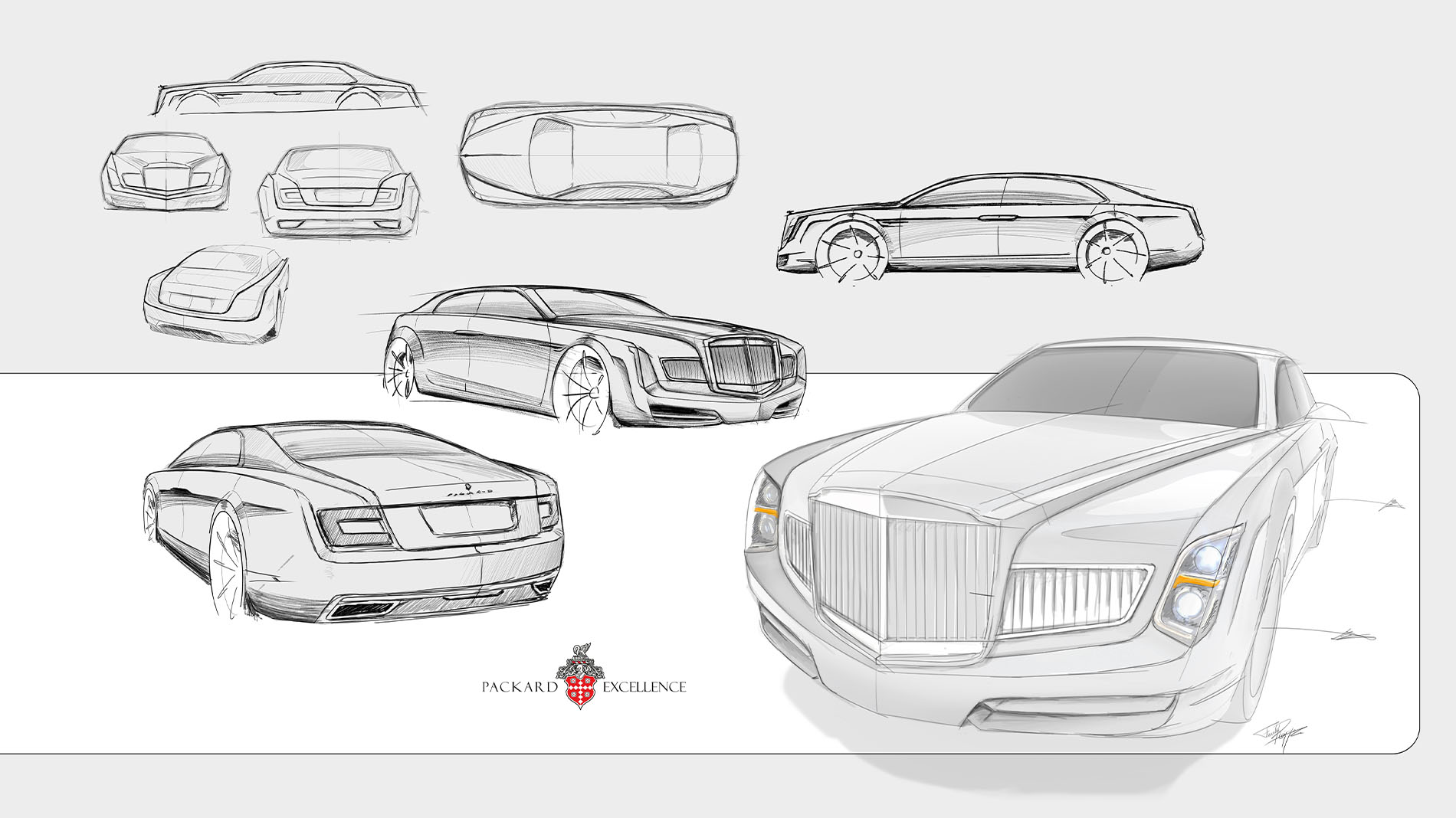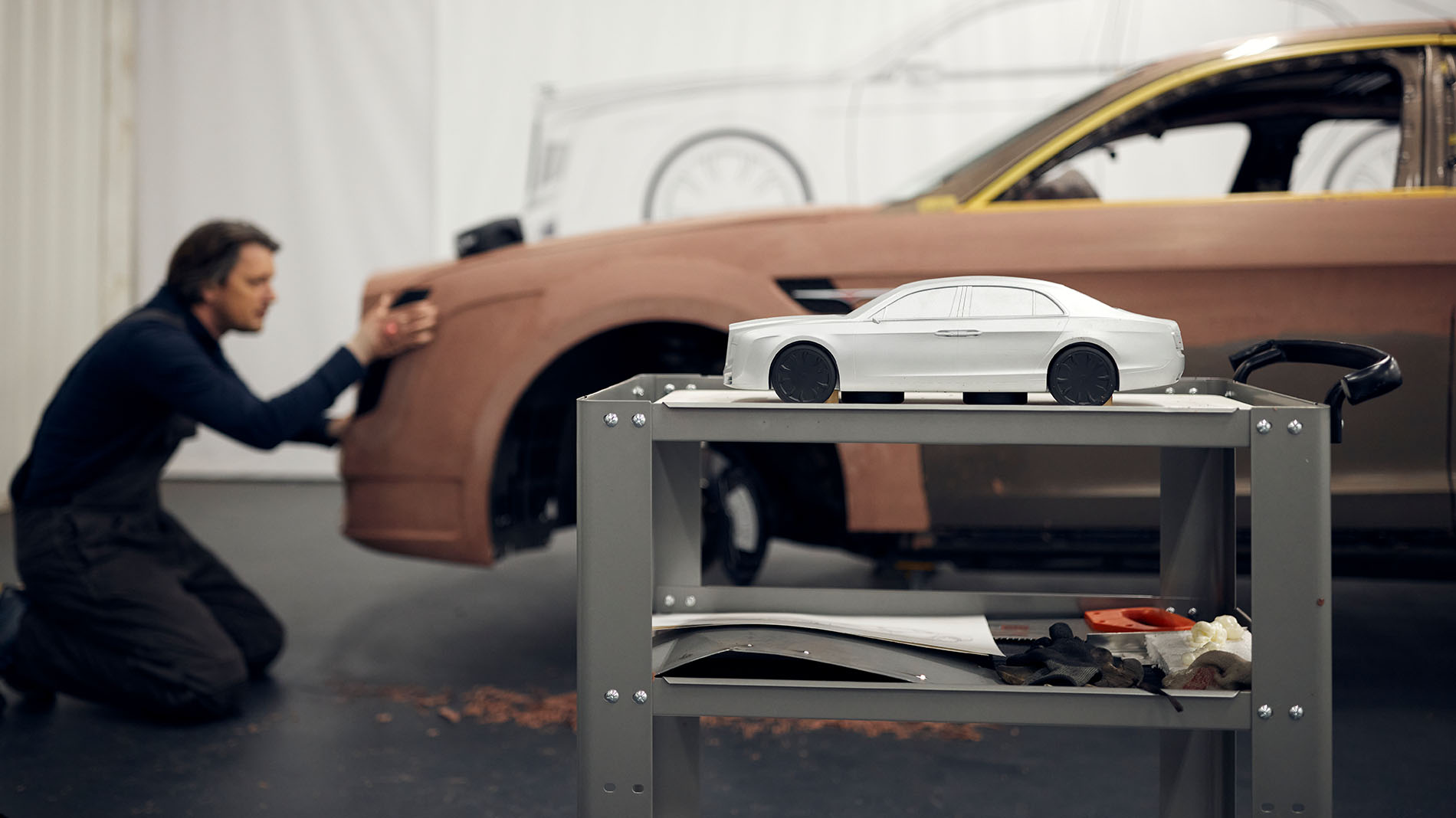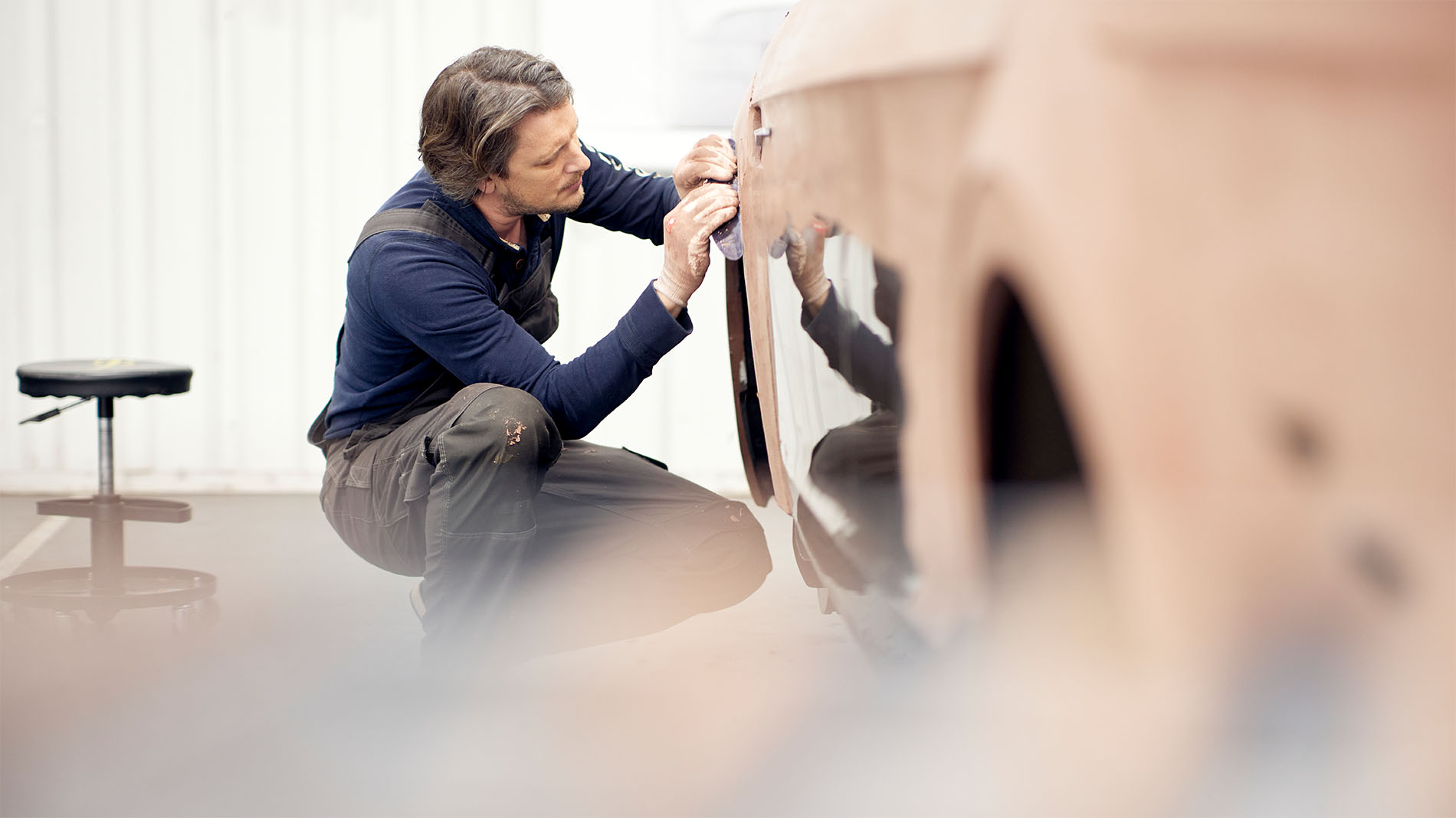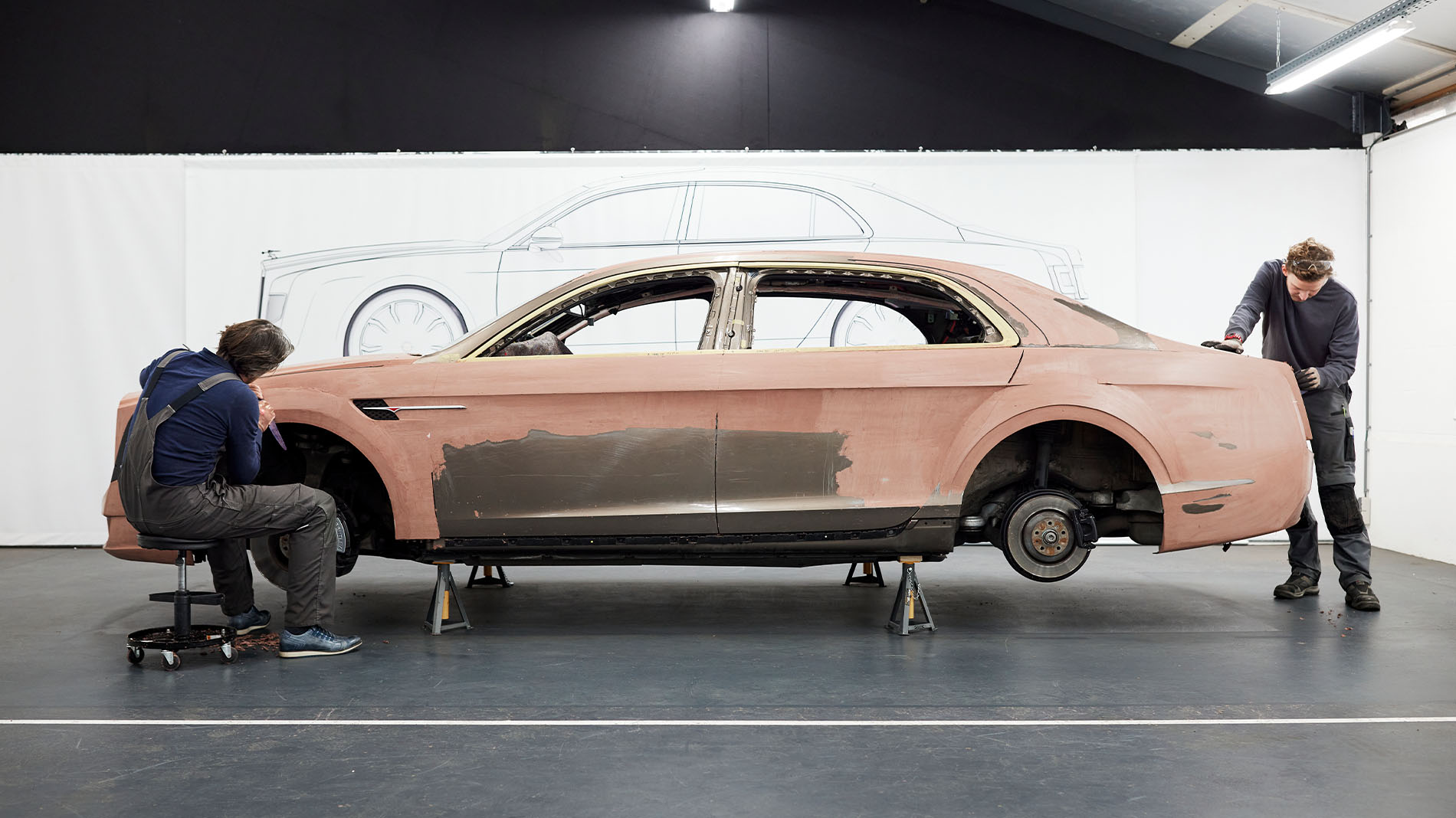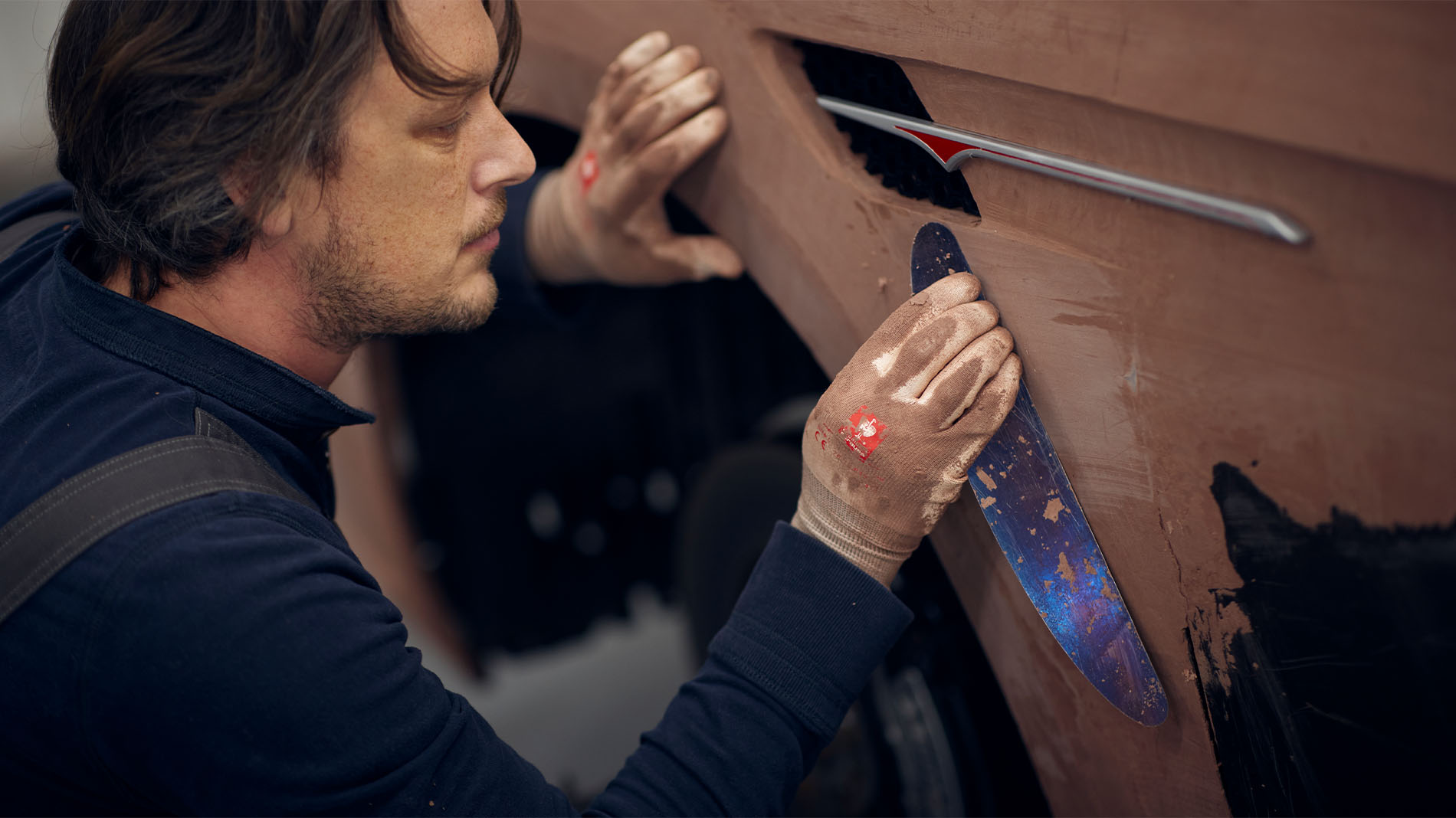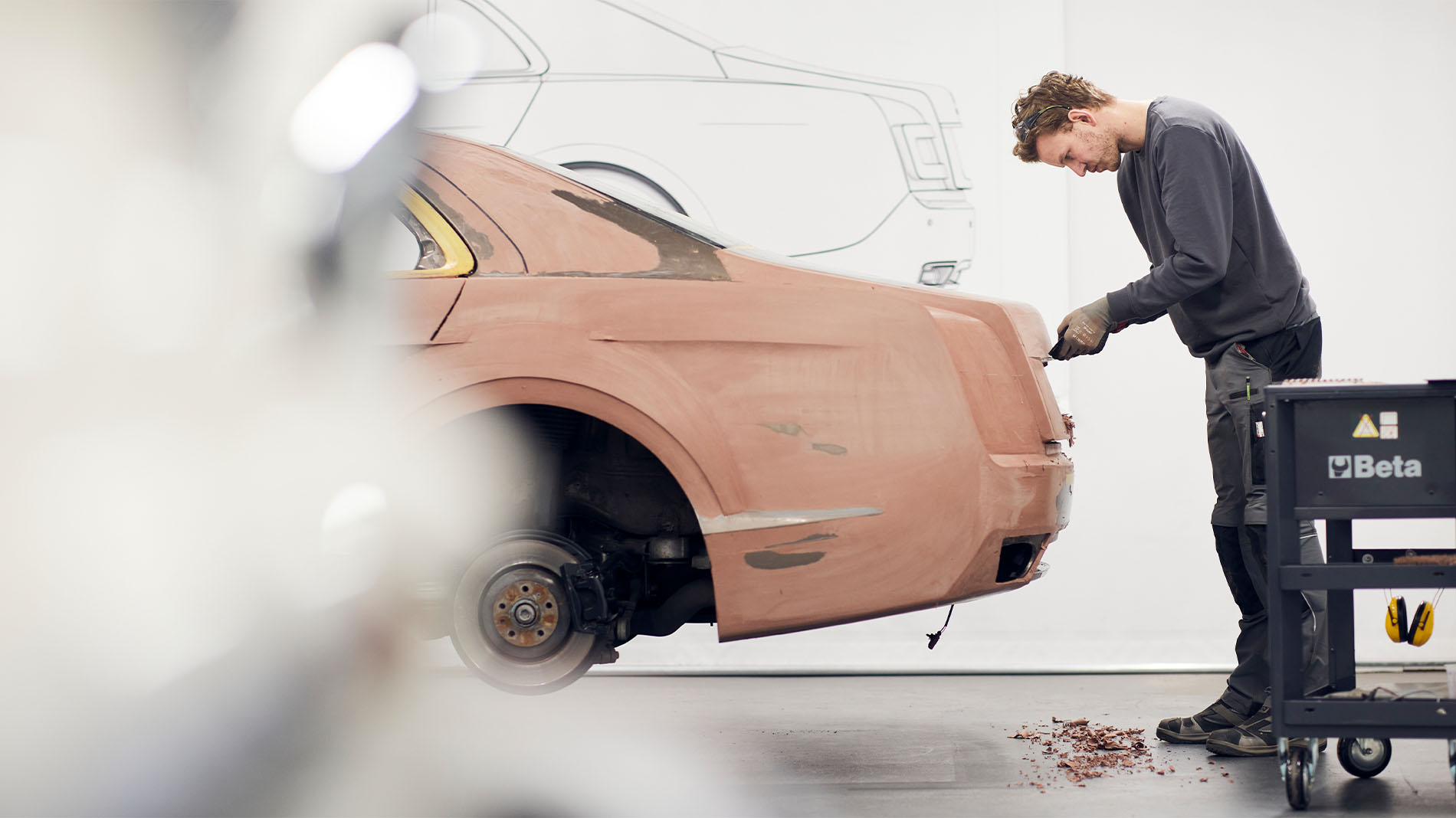The brief was to design a modern Packard—no small task, given the brand ended in 1958. Research revealed Packard once considered rebadging the Facel Vega Excellence, a connection that resonated with our client, a fan of both marques. This inspired a design that draws from classic Packards and the Facel Vega alike.
From the outset, I worked closely with the client and JB Classic & Bespoke, refining the concept through multiple stages of sketching and feedback to ensure the design honored Packard’s legacy while introducing a fresh, contemporary identity.
Once the design phase was fully completed and received approval from the client, we moved forward to the next critical stage: creating a physical representation of the design. I began by 3D printing a detailed scale model of the car. This model served as a tangible reference point, allowing us to study the vehicle’s form and overall proportions in a three-dimensional context, beyond what drawings and digital renderings could provide.
Using this 3D-printed scale model along with numerous precise scale drawings, JB Classic & Bespoke an I then initiated the process of sculpting one side of the car in clay. This step is especially important because it bridges the gap between conceptual design and physical reality. Working with clay enables us to assess the surface quality, curvature, and flow of the car’s lines in a hands-on way. It also allows us to identify any discrepancies or proportion issues that might not be apparent in digital formats.

